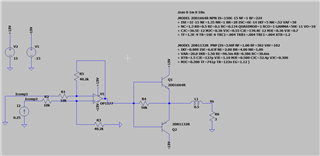Other Parts Discussed in Thread: DRV411, TIPD184
Hi Support team,
do you have a simulation model for DRV421? It would be great for LTspice. If not, could you tell me how I can simulation the output signal of Icomp1 and Icomp2? I tried to generate a current source of 250mA out from the Icomp2, but I don't know what to do with the Icomp2. I am currently simulating a external driver circuit using this chip. Thanks.
Regards,
Yutong


